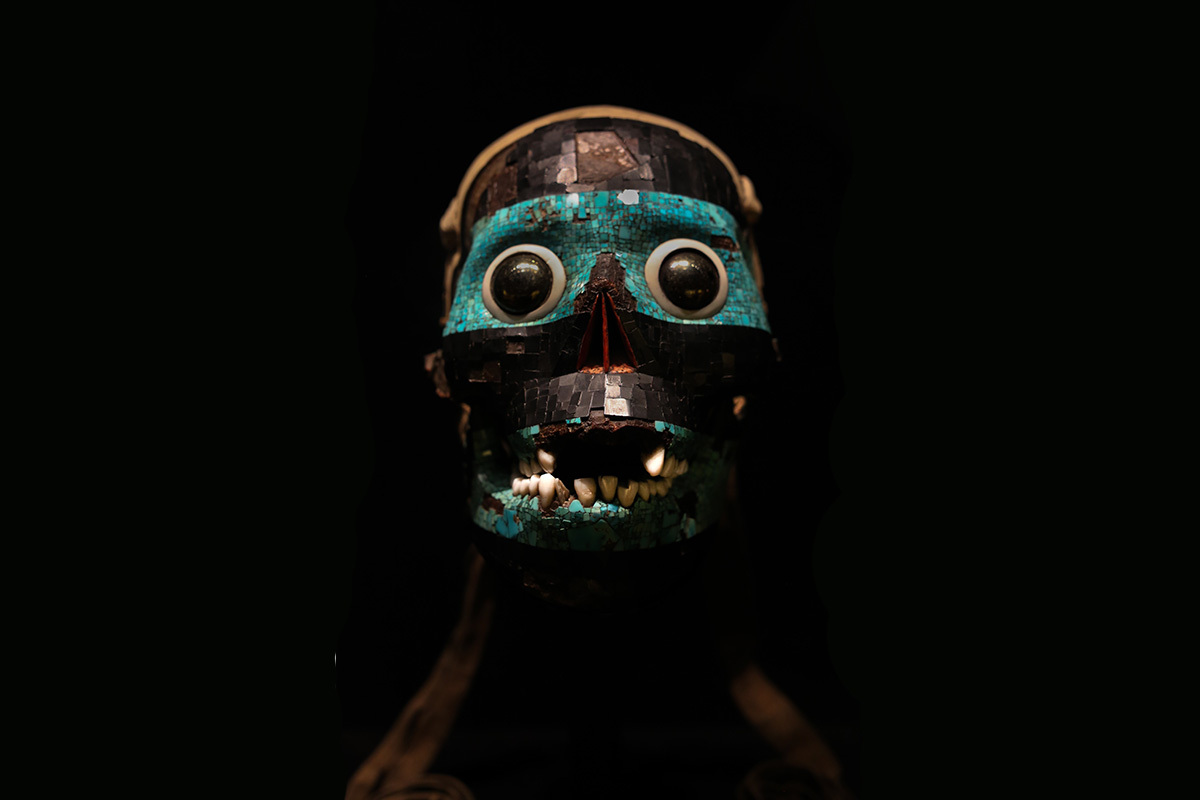
Scientists have recreated the terrifying sound of the Aztec “death whistle”. The whistle, used by the Aztecs during ritual human sacrifices, has been recreated using 3D printing technology.
Researchers based the replica on a well-preserved model found in Mexico in the 1990s. The whistle features a skull-shaped object that emits a terrifying sound when someone blows on it.
The scientists turned on the 3D-printed machine and recorded the sound, which resembled a high-pitched scream. It is believed that the Aztecs blew whistles before making sacrifices to honor the wind god Icatl.
However, other theories suggest that the death whistle was used to “muffle” the victims’ screams so they could not be heard.
Some experts believe it can also be used to scare away evil spirits. The sound produced by the 3D printed whistle is heard video Published by the educational channel Action Lab.
“It’s considered the scariest sound in the world,” said host James J. Orgill.
“Believe it or not, this is not a human scream. The sound of a death whistle causes an innate fear in your heart,” he notes characteristically. According to Orgel, The shape of the whistle is intended to imitate the shape of the human larynx.
Once the user blows into it, the air splits into two to create sound waves that escape through a second opening.
Different whistles produce slightly different sounds depending on various factors, such as the size and position of the mouth. The larger the copy, the greater the noise effect, such as that produced by the particular copy.
“For some reason, the impact of yelling is stronger when you don’t see the person blowing the whistle,” Orgel says.
“[Αυτό είναι] “Maybe because your mind knows it’s a whistle,” he added.
Musical archaeologist Arend Adje had the opportunity to test the original excavated whistles, and the resulting actual sound was much softer. He describes the sound as similar to “atmospheric noise generated by the wind” and may have been used in simple ceremonies.
How did the ancient Aztecs use the haunted death whistle?
Buried beneath the streets and squares of modern Mexico City are the ruins of ancient Aztec temples where human sacrifices were routinely performed to appease the gods. In the late 1990s, while excavating a circular temple dedicated to Ehecatl, the Aztec god of the winds, archaeologists discovered the remains of a 20-year-old boy, decapitated and squatting at the base of the temple’s main staircase.
What made the Mexico City discovery so special was that the human sacrifice skeleton was found holding a pair of musical instruments in each hand. They were small ceramic whistles decorated with a menacing skull face. As archaeologists quickly realized, the skull image represented Mictlanticuhtli, the Aztec god of the underworld and death itself.
And so the world became fascinated by a mysterious new machine known as… “The Aztec Death Whistle.”
Today, if you Google “Aztec death whistle” you will find articles claiming that the “haunting screams” of the death whistle were used to “terrify” Aztec enemies in battle or to imitate the tortured screams of their victims, when they were alive. Hearts were torn from their chests. You can also watch This popular video by the late musician Xavier Yxayotl to produce the chilling sounds of an oversized death whistle.
But the truth, experts say, is that we know very little about how the Aztecs used these interesting instruments, or even what the instruments actually sounded like when played by an ancient Aztec priest or musician. What we can safely conclude from the discovery in Mexico City is that death whistles undoubtedly had ritual significance and were probably used to guide the souls of the dead into the afterlife.

“Hipster-friendly coffee fanatic. Subtly charming bacon advocate. Friend of animals everywhere.”





More Stories
A ship carrying weapons to Israel was not allowed to dock
New Caledonia: where it is located and what bloody riots are happening on the island
“The catastrophe we are experiencing is the worst ever.”